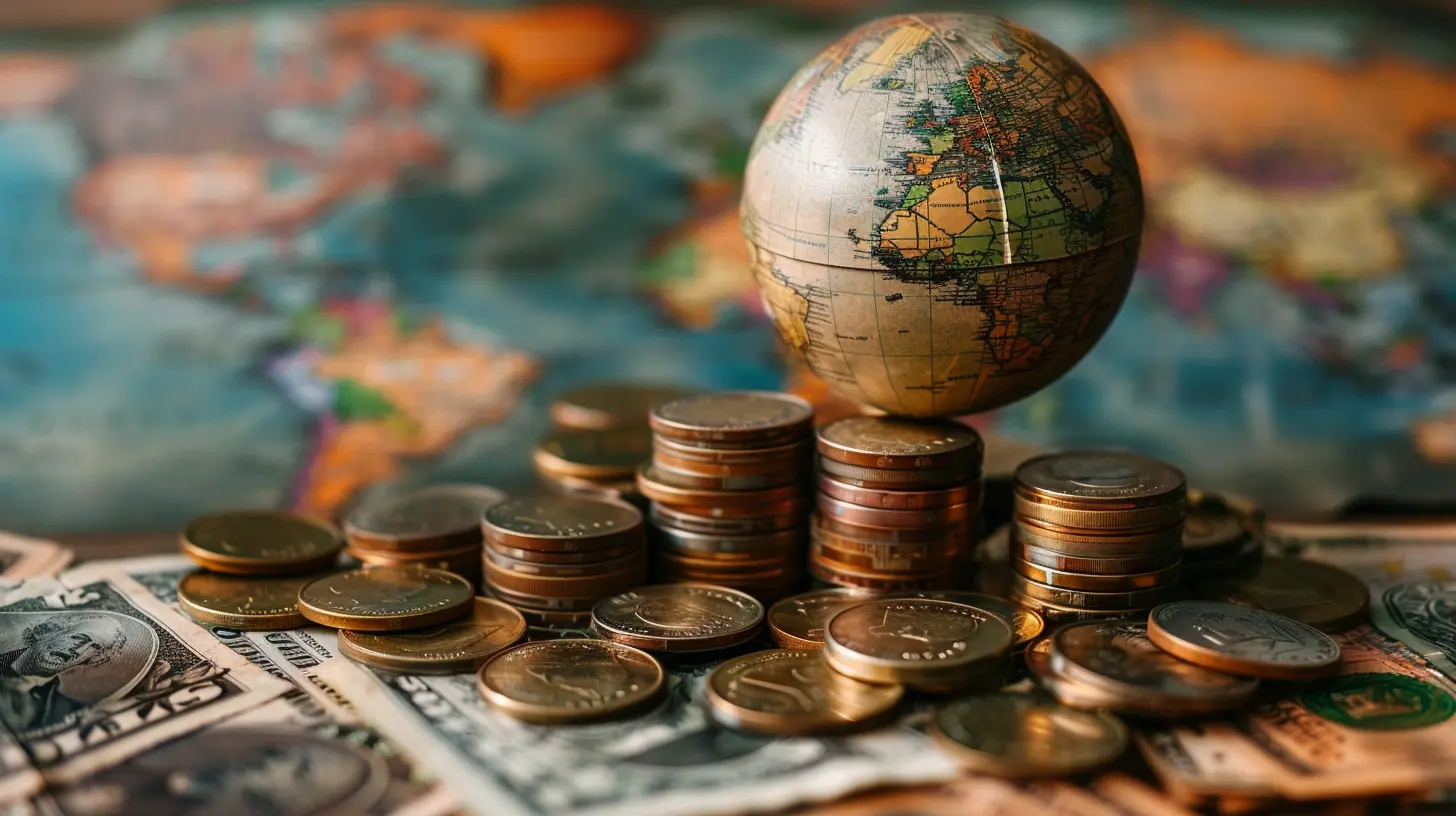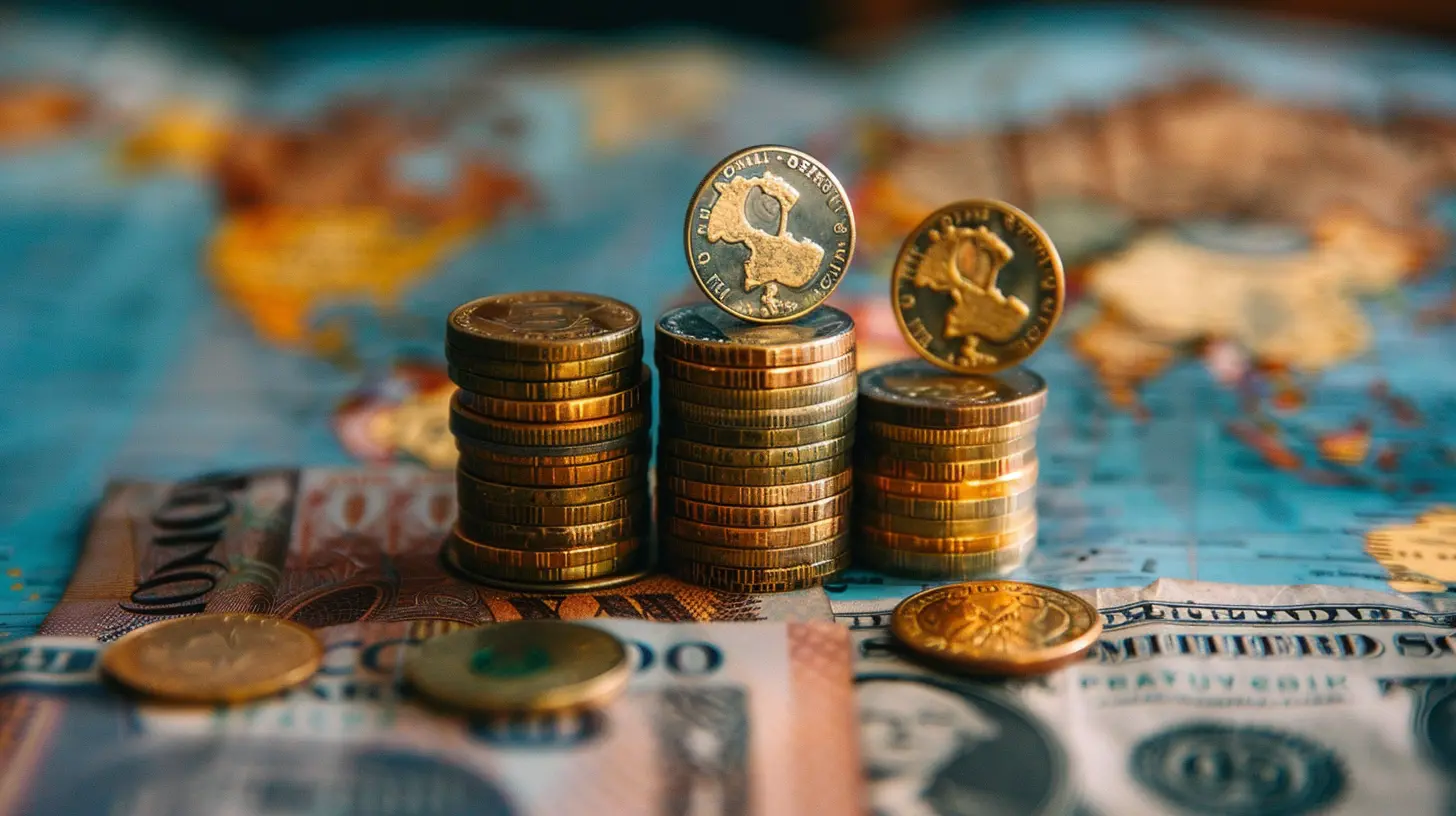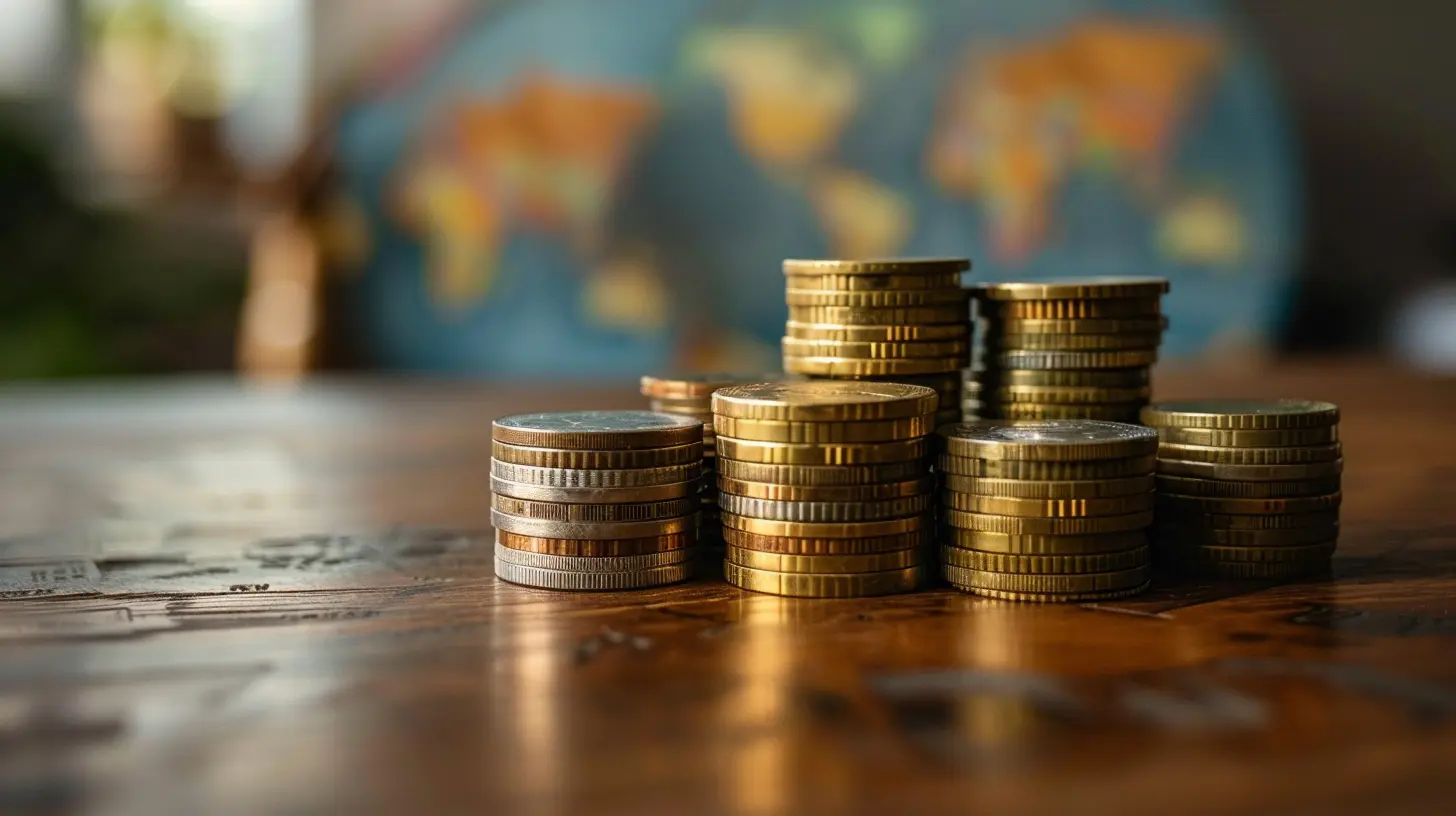How Interest Rates Impact Global Trade and Investments
19 December 2024
Interest rates. It’s a term you probably hear often, whether it’s during the evening news or while scrolling through social media. But have you ever stopped to think about how this seemingly simple number impacts global trade and investments? Believe it or not, this little percentage plays a gigantic role in shaping economies, influencing decisions, and even dictating the flow of money across borders.
Let’s break it down step by step, with plenty of examples and relatable analogies along the way. By the time you finish reading, you’ll know exactly why interest rates matter and how they ripple through the intertwined world of global trade and investments. 
What Are Interest Rates, Anyway?
First things first—what exactly are interest rates? If you’ve ever borrowed money from a bank or used a credit card, you might already have some idea. Put simply, an interest rate is the cost of borrowing money or the reward for saving it.Think of it as the "price tag" on money. Just like how a carton of milk has a price, borrowing $1,000 will also come with its own price in the form of an interest rate. For example, if the interest rate is 5%, you’ll pay $50 for borrowing that $1,000 over a year.
Now imagine this example multiplied by billions or even trillions of dollars in global markets. That’s the scale we’re talking about when it comes to how interest rates impact international trade and investments. It’s huge! 
How Central Banks Steer the Ship
Central banks, like the Federal Reserve in the U.S. or the European Central Bank (ECB), are the key players when it comes to setting interest rates. They adjust these rates to either stimulate or cool down an economy.Here’s a quick analogy: think of the economy as a car. If the car is driving too fast (i.e., inflation is high), central banks press the brakes by raising interest rates. On the other hand, if the car is barely moving (i.e., growth is slow), they hit the accelerator by lowering rates.
Why does this matter for global trade and investments? Because these rate changes don’t just stay within national borders—they have far-reaching consequences across the world. 
The Domino Effect on Global Trade
1. Exchange Rates Take Center Stage
Interest rates and exchange rates are like two dance partners—they’re closely intertwined. When a country raises its interest rates, its currency often strengthens. Why? Higher interest rates attract foreign investors because they can earn better returns on their money.Imagine you’re an investor. If the U.S. offers a 5% return and another country offers just 1%, where would you want to park your money? The answer is obvious—high-interest-rate countries become hot spots. But this surge in demand strengthens their currency, making their exports more expensive.
Let’s say a company in Japan wants to buy goods from the U.S. If the U.S. dollar is strong, those goods become pricier for Japanese buyers. Result? A potential dip in U.S. exports.
Conversely, countries with lower interest rates might see their currencies weaken, making their exports cheaper and more attractive to global buyers. It’s a balancing act that keeps traders and policymakers on their toes.
2. Borrowing Costs for Trade
Trade often involves borrowing. Think about companies arranging large shipments of goods—they frequently rely on loans to finance their operations. If interest rates are high, borrowing becomes more expensive, which can discourage businesses from engaging in trade.For instance, if a company in India needs to secure a loan to import machinery from Germany, high interest rates could eat into their profits. In contrast, lower interest rates create cheaper financing options, encouraging more trade activity. It’s a bit like choosing between buying groceries with a credit card that charges 20% interest or one that charges just 5%. Which one would you pick? 
Investments: The Push and Pull of Interest Rates
Just as interest rates influence trade, they also shape the behavior of investors. Whether you’re a small-town investor or a multinational corporation, the decisions you make are often tied to interest rates. Let’s take a closer look.1. The Allure of High-Yield Markets
When interest rates rise in a country, it’s like a magnet for investors. Bonds and savings accounts become more attractive because they offer higher returns. For example, if the U.S. raises its interest rates, global investors might flock to U.S. Treasury bonds for their reliable yields.On the flip side, higher rates can make stock markets less attractive. Why? Because investors often shift their money from riskier assets (like stocks) to safer ones (like bonds). Imagine choosing between a risky roller coaster ride and a safe, comfortable couch—higher rates make that couch way more tempting.
2. Lower Rates Mean Risk-On Behavior
When rates are low, it’s a different story. Investors look for better returns, often turning to riskier assets like stocks, real estate, or emerging markets. For instance, after the 2008 financial crisis, central banks worldwide slashed interest rates to near zero. This led to a massive wave of investments in emerging markets like Brazil, India, and China.Why? Because lower rates make borrowing cheaper, which stimulates growth, while investors hunt for higher returns in riskier parts of the world. It’s like a treasure hunt—when the easy prizes (safe assets) aren’t rewarding enough, investors start exploring uncharted territories.
Global Capital Flows: A Game of Hot Potato
Interest rates also dictate the flow of capital between countries. When rates differ significantly between nations, money moves in search of better returns.For instance, if Europe has low rates and the U.S. has high rates, investors might pull money out of Europe and funnel it into U.S. assets. This shifting of capital can destabilize economies, especially for smaller or developing nations. It’s a bit like a seesaw—when one side goes up, the other must come down.
The Double-Edged Sword
Here’s the tricky part: interest rates can be a double-edged sword.- For Developed Countries: High interest rates might attract investments, but they can also hurt exports due to a stronger currency. Conversely, low rates might boost exports but lead to bloated stock markets and riskier investments.
- For Developing Countries: Low rates in developed nations often mean a flood of investments into emerging markets, but when rates rise again, that money can quickly vanish, causing economic instability.
It’s a delicate balancing act. Too much or too little of anything can tip the scales, sending shockwaves across the entire financial system.
Real-World Examples
Let’s put theory into practice with some real-world scenarios:- The 1980s U.S. Interest Rate Hikes: To combat inflation, the Federal Reserve raised rates significantly in the early 1980s. This strengthened the U.S. dollar but also made American exports expensive, leading to trade deficits.
- Post-2008 Financial Crisis: Central banks slashed rates to spur economic recovery, which encouraged investors to pour money into riskier assets like emerging markets.
- The COVID-19 Pandemic: Rates were slashed again in most parts of the world, leading to a surge in investments in stocks, real estate, and tech companies.
Conclusion: Why It All Matters
So, why should you care about interest rates and their impact on global trade and investments? Because they influence everything—from the price of goods at your local store to the health of your retirement savings. They’re like the invisible threads weaving together the global economy.The next time you hear about rate hikes or cuts, take a moment to think about the ripple effects. Those tiny shifts can shape the economic landscape, paving the way for booms or busts. Understanding this key piece of the puzzle puts you ahead of the game, whether you’re a curious reader, an investor, or just someone trying to make sense of the world.
all images in this post were generated using AI tools
Category:
Interest Rates ImpactAuthor:

Yasmin McGee
Discussion
rate this article
18 comments
Pilar McRae
This article sheds light on a complex relationship! It's fascinating to consider how fluctuations in interest rates can ripple through global trade and investment strategies. I’m eager to explore more about these impacts!
February 11, 2025 at 4:20 AM

Yasmin McGee
Thank you for your thoughtful comment! I'm glad you found the article engaging—interest rates indeed have far-reaching effects on global trade and investment. I hope you continue to explore this fascinating topic!
Faenor Sharpe
Interest rates are pivotal in shaping global trade dynamics and investment flows, influencing decisions that drive economic growth and stability.
February 3, 2025 at 1:32 PM

Yasmin McGee
Thank you for your insightful comment! Indeed, interest rates play a crucial role in shaping economic landscapes, affecting trade and investment decisions on a global scale.
Raven Thornton
Great insights! Understanding how interest rates influence global trade and investments is crucial. This knowledge empowers us to make informed financial decisions in a changing landscape.
January 31, 2025 at 12:20 PM

Yasmin McGee
Thank you! I'm glad you found the insights valuable. Understanding interest rates is indeed essential for navigating today's dynamic financial landscape.
Thalor McDaniel
Great insights! It’s fascinating how interest rates can ripple through global trade and investments. Understanding this connection helps us all navigate the financial landscape better. Who knew that a small change in rates could lead to such big impacts on our wallets and economy?
January 27, 2025 at 9:05 PM

Yasmin McGee
Thank you! I'm glad you found it insightful. The ripple effect of interest rates is indeed crucial for understanding the broader economic landscape.
Noelle McTigue
Oh, because nothing says "exciting" like interest rates affecting global trade! Who needs thrilling adventures when you can analyze financial jargon and watch paint dry? Grab your popcorn, folks—this one's a real nail-biter!
January 25, 2025 at 11:46 AM

Yasmin McGee
While it may not seem thrilling, understanding interest rates is crucial for navigating the complexities of global trade and investment. Every economic factor has its impact—sometimes, it's the details that drive the real adventures in finance!
Arianth Wilcox
Great insights in this article! Understanding the relationship between interest rates and global trade is crucial for investors and businesses alike. This analysis offers valuable perspectives that can help navigate the complexities of the financial landscape. Keep up the excellent work in shedding light on such important topics!
January 23, 2025 at 12:39 PM

Yasmin McGee
Thank you for your thoughtful feedback! I'm glad you found the insights valuable. Understanding these dynamics is indeed essential for navigating today's financial landscape.
Fenris McGowan
Great insights! It's fascinating how interest rates ripple through global trade and investments. Understanding this connection is key for anyone navigating today's financial landscape. Thanks for sharing!
January 19, 2025 at 7:54 PM

Yasmin McGee
Thank you for your thoughtful comment! I'm glad you found the insights valuable. Understanding the interplay of interest rates and global trade is indeed crucial for navigating today's financial landscape.
Simon McGarvey
This article effectively highlights the intricate relationship between interest rates and global trade. It would be beneficial to include specific examples or case studies of recent trends, as this could enhance readers' understanding of how fluctuations in interest rates directly influence investment decisions across different regions. Great insights overall!
January 18, 2025 at 5:59 AM

Yasmin McGee
Thank you for the feedback! I appreciate your suggestion and will consider adding specific examples or case studies in future revisions to enhance clarity and understanding.
Simon Riggs
This article provides valuable insights into the intricate relationship between interest rates and global trade. The impact on investments is particularly compelling, highlighting how shifts in monetary policy can influence economic dynamics worldwide. Thank you for shedding light on this crucial topic!
January 13, 2025 at 3:48 AM

Yasmin McGee
Thank you for your thoughtful comment! I'm glad you found the insights valuable and relevant.
Lira Duffy
Understanding interest rates is crucial for navigating global trade and investments. By staying informed, we can seize opportunities and adapt to market changes. Embrace the challenge, as each economic shift presents a chance for growth and innovation in your financial journey!
January 7, 2025 at 5:17 AM

Yasmin McGee
Thank you for highlighting the importance of understanding interest rates! Your insights emphasize how being informed can lead to strategic opportunities in a dynamic economic landscape.
Blake Turner
This article brilliantly highlights the intricate relationship between interest rates and global trade. It’s essential to understand how these factors influence investment decisions and economic stability. Thank you for shedding light on such a vital topic that affects us all!
January 2, 2025 at 9:06 PM

Yasmin McGee
Thank you for your thoughtful comment! I'm glad you found the article illuminating—it’s crucial to grasp these connections for a better understanding of our global economy.
Lysander Roberts
Great article! Your insights on how interest rates influence global trade and investments are clear and valuable. It’s essential knowledge for navigating today’s economic landscape. Thank you!
December 29, 2024 at 5:05 AM

Yasmin McGee
Thank you for your kind words! I'm glad you found the insights valuable.
Gianna Lopez
Exciting insights on trade and investment!
December 26, 2024 at 3:36 AM

Yasmin McGee
Thank you! I'm glad you found the insights valuable.
Thistle Becker
What a fantastic read! It's amazing how interest rates shape global trade and investments. Understanding this connection opens up a world of opportunities!
December 23, 2024 at 5:29 AM

Yasmin McGee
Thank you! I'm glad you found the article insightful. Understanding interest rates indeed reveals many opportunities in global trade and investments!
Christa Cox
Great insights! It's fascinating how interest rates ripple through global trade and investments. It’s like a delicate dance; a slight shift can lead to significant changes. Definitely a topic worth keeping an eye on!
December 21, 2024 at 7:47 PM

Yasmin McGee
Thank you! I'm glad you found it insightful. Interest rates truly do have a profound effect on global dynamics. It's a crucial topic to watch closely!
Lana McDonald
Thank you for shedding light on such an important topic. Understanding how interest rates affect global trade and investments can truly empower individuals and businesses to make more informed financial decisions during uncertain times.
December 20, 2024 at 3:41 AM

Yasmin McGee
Thank you for your insightful comment! I'm glad you found the article helpful in understanding this crucial topic.
Francesca Wade
This article brilliantly highlights the intricate link between interest rates and global trade. Understanding these dynamics is essential for informed investment decisions. Thank you for sharing!
December 19, 2024 at 9:28 PM

Yasmin McGee
Thank you for your thoughtful comment! I'm glad you found the connections between interest rates and global trade insightful.
Harlow O'Brien
Interest rates significantly influence global trade dynamics and investment decisions, shaping economic growth and international market interactions.
December 19, 2024 at 3:53 AM

Yasmin McGee
Absolutely, interest rates play a crucial role in shaping trade and investment by affecting borrowing costs and financial flow, ultimately influencing economic growth worldwide.
MORE POSTS

Financial Regulation in the Digital Age: Challenges and Opportunities

The Pros and Cons of Raising International Funds for Your Startup

Understanding the Tax Rules for Inherited Property and Assets

The Long-Term Consequences of Ultra-Low Interest Rates

The Best Tax Strategies for High-Income Earners

How to Manage Your 401(k) in a Bear Market

Leveraging Technology to Optimize Wealth Building

Should You Delay Retirement for a Bigger Nest Egg?

Seed Funding 101: A Guide for New Entrepreneurs

The Art and Science of Asset Allocation in Retirement Planning

Ways to Hedge Against Interest Rate Volatility in Investments